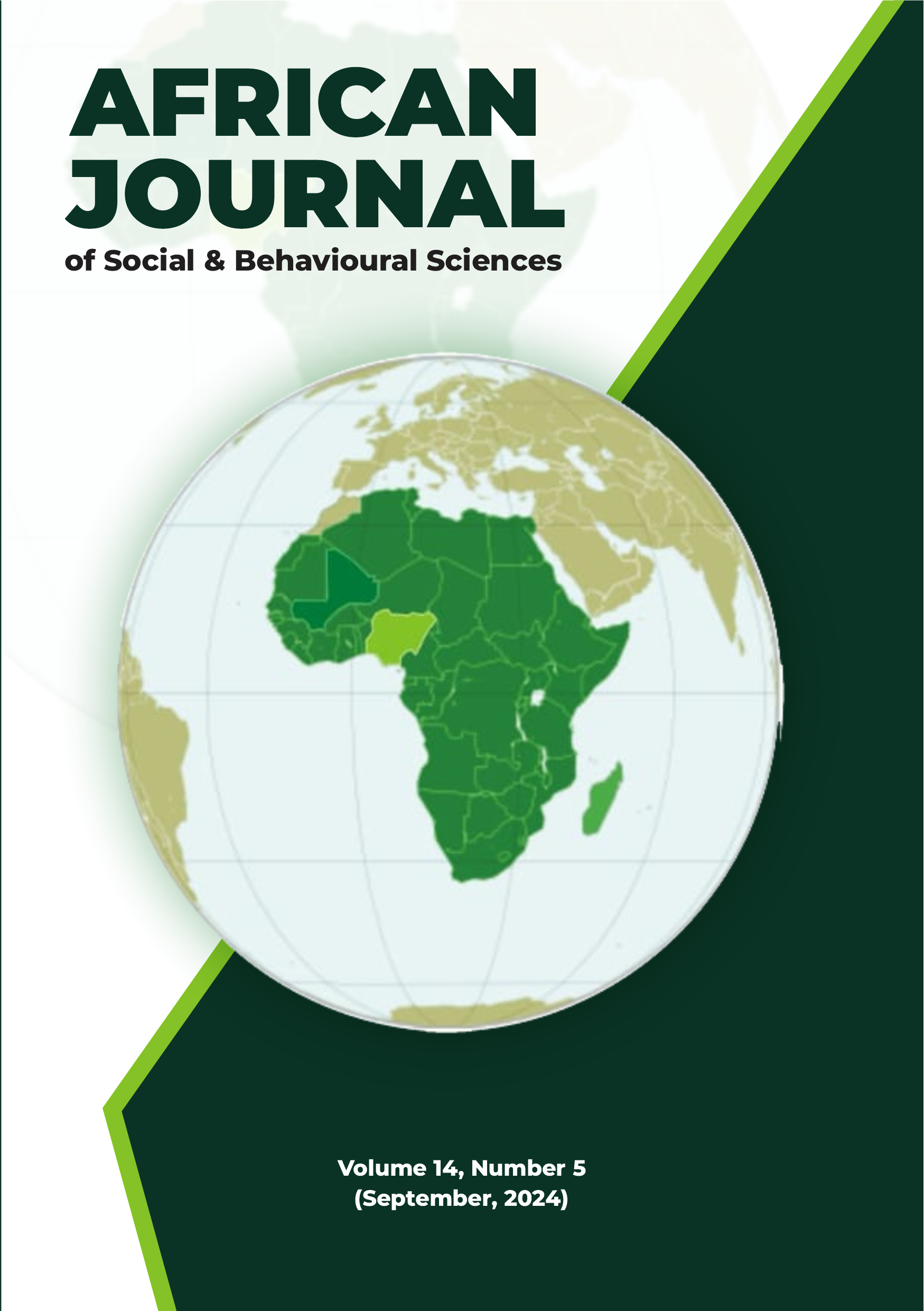GENDER AND EDUCATIONAL LEVEL AS PREDICTORS OF INCIDENCE OF BODY DYSMORPHIA AMONG YOUNG ADULTS IN OWERRI
Keywords:
Gender, Body Dysmorphia (BD), Incidence of BD, Educational LevelAbstract
This study investigated gender and educational level as factors predicting the
incidence of body dysmorphia (BD) among young adults in Owerri. Nine hundred and
nineteen (914) young adults comprising 447 males and 467 females aged 18 - 25 years with a
mean age of 20.77 years and standard deviation of 2.18 were sampled from Owerri, via
cluster sampling and random sampling techniques. Three hypotheses guided this work and
data was collected using the Body Dysmorphia Questionnaire (BDQ). The data collected, was
analyzed via descriptive statistics and regression analysis. The results of the present study
revealed that gender predicted the incidence of BD among young adults. Educational level
predicted the incidence of BD. Together, gender and educational level predicted the incidence
of BD among young adults in Owerri. Discussions were made based on the findings of the
current study and the literature. A critical recommendation of this work is that health
professionals and clinical psychologists should adopt a comprehensive and individualized
approach to screening and treating BD, taking into account patients’ sociodemographic
factors especially gender and educational background. This includes incorporating questions
and assessments that explore how these factors influence patients’ body image perceptions
and tailoring interventions to address specific pressures and challenges faced by different
demographic groups. Another recommendation is that counselors should offer culturally
sensitive and gender-responsive counselling that acknowledges and addresses the unique
societal and educational pressures influencing BD. Hence, to ensure that treatment plans are
relevant and effective, the individual’s specific context and experiences should be considered.


